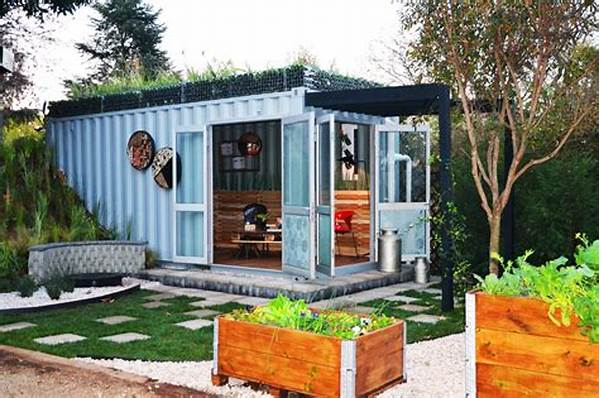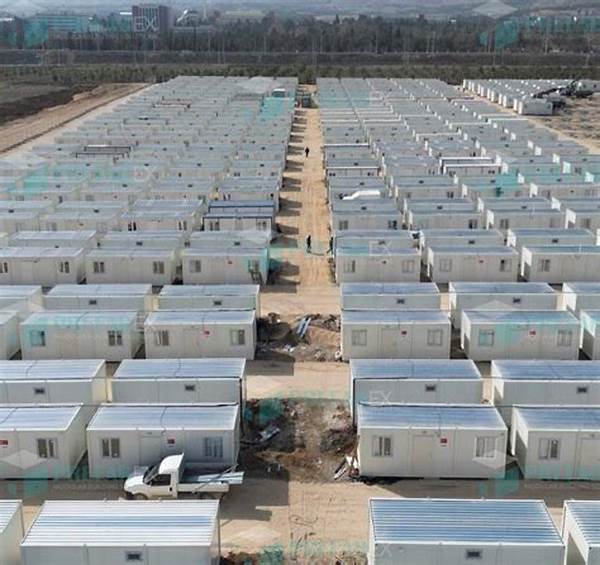Imagine a bustling city where every rooftop is an oasis of green, a place where nature thrives in harmony with humanity’s architectural achievements. Welcome to the world of shipping containers converted into rooftop urban gardens—a unique and innovative concept that’s capturing attention worldwide. This blend of sustainable architecture and urban gardening offers an eye-catching solution to urban pollution, food scarcity, and even climate change, all while converting the often ignored rooftops of our concrete jungle into verdant sanctuaries.
Read More : Trash Containers In Bali
If you’re tired of staring at gray cityscapes and dreaming of a garden in the sky, the transformation of shipping containers into rooftop gardens might just be your calling. The potential for creativity is endless, and the result is not only functional but incredibly stylish. Whether you’re a city dweller looking for a green touch, an environmentalist seeking sustainable solutions, or simply someone who loves a good story of transformation, this journey from shipping container to rooftop garden has something for everyone.
The Beauty of Shipping Containers Converted into Rooftop Urban Gardens
Shipping containers have long been heralded as marvels of adaptability, boasting a rugged resilience perfect for repurposing into various architectural applications. Their use in creating rooftop urban gardens is truly extraordinary. With their modular shape and sturdy design, containers provide a fantastic foundation for greenery, supporting everything from vegetable gardens to lush flower beds. This method doesn’t just reinvent spaces; it breathes life into urban landscapes, offering a scenic retreat several stories above the bustling streets below.
Fortunately, the concept is gaining traction, with creative thinkers and urban planners worldwide eager to harness its full potential. Imagine an entire cityscape dominated by vibrant splashes of green amidst steel and glass—a movement turning the dream of sustainable urban living into reality. Shipping containers converted into rooftop urban gardens are no longer just a vision but a viable, impactful solution.
Benefits of Rooftop Urban Gardens
The advantages of transforming shipping containers into rooftop gardens span both environmental and social realms. First and foremost, they enhance air quality by absorbing carbon dioxide and releasing oxygen, thus acting as a natural air purifier. Not to mention, they help insulate buildings, leading to reduced energy costs by naturally regulating temperature.
Moreover, these green spaces provide a refuge for urban wildlife such as birds, bees, and butterflies, further promoting biodiversity. They can also address food production challenges by enabling local farming in dense urban areas, reducing the need for transportation of goods. These gardens become community hubs, offering a peaceful escape for residents and a platform for environmental education.
How Shipping Containers Become Urban Gardens
Transforming the Canvas: From Container to Garden
The transformation process is a harmony of creative design and practical application. It usually starts by selecting suitable shipping containers; second-hand containers are often chosen for their cost-effectiveness and character. These containers are then carefully modified with proper insulation, drainage systems, and access points for water and nutrients.
The exterior of the containers is typically altered to suit the unique needs of the intended garden—whether it be lush verdant landscapes or a functional urban farm. Using lightweight soil mixtures ensures the structure can support the garden without compromising stability. Irrigation systems, such as drip lines, are installed to manage water distribution efficiently.
Design Considerations and Challenges
While the concept is appealing, executing it involves meticulous planning to address weight distribution, load-bearing capabilities, and adherence to local building laws. The art lies in balancing engineering challenges with the aesthetics of design.
Read More : Trash Container Solutions For Plantations
Concerns about container heat retention demand solutions such as reflective coatings or shading to ensure plant health and comfort for visitors. Partnerships with architects and horticulturists result in thoughtful designs that maximize the potential of each unique rooftop space.
Examples and Purposes of Rooftop Gardens
Shipping containers converted into rooftop urban gardens fulfill diverse functions:
A Growing Trend with Purpose
As awareness of environmental issues grows, so does the interest in sustainable urban designs. Shipping containers converted into rooftops are much more than an architectural trend; they represent a shift toward sustainable living practices. They encourage creativity in using limited urban spaces to foster greenery and productivity.
Pointers to Consider
Summary: The Future of Urban Green Spaces
In summary, shipping containers converted into rooftop urban gardens signify an innovative approach to greening urban landscapes. Their role as aesthetic, functional, and sustainable solutions promises a brighter, greener future for city dwellers. By marrying eco-conscious living with urban development, we begin to redefine cityscapes in an environmentally friendly light.
While the journey involves creativity and robust execution, the result often surpasses expectations, transforming dull spaces into productive and beautiful landscapes. This movement encourages urban residents to rethink the potential of their rooftops and the power they hold to effect positive change.
Shipping Containers: A Catalyst for Change
These projects continue to inspire, with every new container garden serving as a small victory for sustainable urban living. Potential untapped gains lie in reimagining spaces otherwise left underutilized, proving that even amidst steel and cement, the seeds of nature can thrive and flourish unabated.
As more rooftops become canvases of green art, we find ourselves reaching new heights, both literally and metaphorically, in our quest to harmonize urban life with the natural world.










